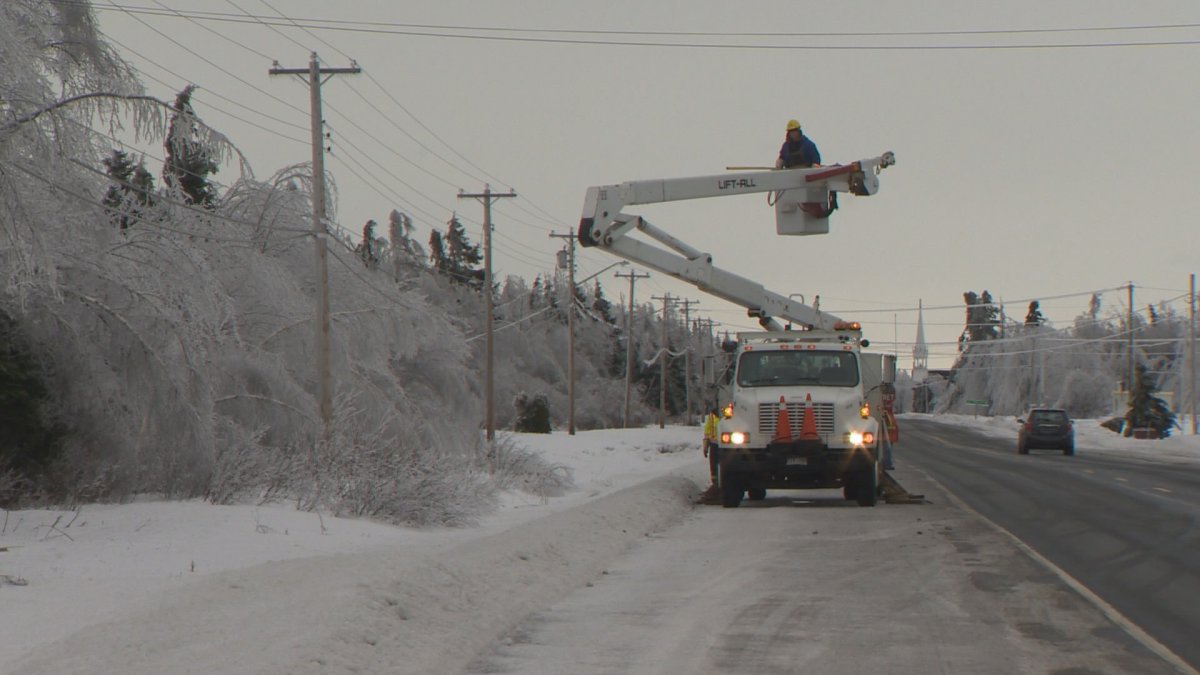New Brunswick premier Brian Gallant said 150 members of the Canadian Armed Forces are scheduled to arrive in parts of the province that were hardest hit by Tuesday’s ice storm.

At a news conference in Shippagan, N.B. Sunday, Gallant said the number of people suffering from carbon monoxide related illness has increased to 31 people — up from seven on Saturday.
READ MORE: 2 dead, 2 in hospital in wake of devastating New Brunswick ice storm
The premier also re-expressed condolences for the families of two people who died from carbon monoxide poisoning Friday.
“Safety is the number one focus of our government and of all the people involved with the restorative strategy and efforts,” Gallant said.
Gallant said the most important thing is to ensure people get their power back as soon as possible.
New Brunswick Emergency Measures Organization officials are reminding residents about the dangers of running generators indoors.
Moncton Fire Chief Eric Arensault said Saturday that any sort of natural gas, propane, fuel or burning wood can produce carbon monoxide.
“In cases where people are without power they’ll very often try to use a generator or they’ll use other types of gas producing appliances, and if you’re not careful how you use it you can really get yourself and your family into trouble,” Arensault said.
READ MORE: NB emergency officials urge safety during power outage after ice storm
He said he has heard of many people using generators inside their garages and said even that is extremely dangerous,
“What’s dangerous about carbon monoxide is you can’t smell it. It’s an odourlesss gas and depending on the amount of exposure you have, it can harm you over a prolonged period of time or it can harm you in a very short period of time,” Arsenault said.
Aresenault said even if people have carbon monoxide detectors the batteries only last for a short amount of time when the power goes out. He said it’s important for people to charge the batteries in the detector if they are using gas-producing devices. He said symptoms are “flu-like” and are accompanied by a headache.
He said if anyone suspects they’ve been exposed to carbon monoxide they should go outside and call the fire department.
The premier said there are now 350 people on the ground working out of eight operational commander centres.
READ MORE: Train slowly makes way between ice-laden trees after New Brunswick ice storm

“This has been a tremendous effort and their have been some successes that we’re glad to see, but there’s certainly areas in which we need to do better,” Gallant said.
He said there has been “extensive damage” to equipment such as power poles and transformers and said the “damage is more significant than expected” due to the amount of thick ice covering infrastructure.
Gallant told reporters,”progress has been strong, but it has taken time due to incredibly challenging working conditions.”
He said 150,000 customers were initially without power after the storm and said the number of clients without power is now under 30,000.
The premier said there are more than 150 volunteers knocking on doors to check on residents and offer them water and assistance.
Gallant said 90 per cent of homes have been reached as of Sunday afternoon.




Comments